Argentina, Bolivia, Chile, Colombia, Ecuador, Peru
Qhapaq Ñan
Qhapaq Ñan, Andean Road System, is the communication and trade network developed by the Inca Empire.
The infrastructure needed exceptional technological and engineering skills in a difficult geographical setting in rural and remote parts of the Andes. The network supported the Inca Empire’s integration and was a symbol of its strength.
Community Perspective: As a serial transnational site comprising over 720km of road and 273 archaeological sites, it is hard to determine whether you have 'seen' it. Even more so, as it is unclear whether the so-called Associated sites are inscribed as well. The latter include sites that are also WHS in their own right (Cusco, Tiwanaku). The main approach chosen is checking out a few locations near Lima or Cuzco and looking for traces of infrastructure (described well in Clyde’s review). Additionally, Allan has visited locations in Chile, and Els Ingapirca in Ecuador.
Site Info
Official Information
- Full Name
- Qhapaq Ñan, Andean Road System (ID: 1459)
- Status
-
Inscribed 2014
Site history
History of Qhapaq Ñan
- 2014: Revision
- Includes former Ecuador TWHS Pambamarca (1998), Ingapirca (1998) and cultural part of Lacs du Cajas et Ruines de Paredones (2003)
- 2014: Inscribed
- Inscribed
- Type
- Cultural
- Criteria
- ii
- iii
- iv
- vi
Links
- UNESCO
- whc.unesco.org
- Official
-
- qhapaqnan.cultura.pe — Qhapaq Nan (Peru)
- Related
-
- qhapaq-nan.com — 6000km walk along the Qhapaq Nan
All Links
UNESCO.org
- whc.unesco.org — whc.unesco.org/
Official Website
- qhapaqnan.cultura.pe — Qhapaq Nan (Peru)
Forum Discussion
- worldheritagesite.org — Qhapaq Nan - what's included and what not
- worldheritagesite.org — Qhapaq Nan sites in Ecuador
Related Resources
- qhapaq-nan.com — 6000km walk along the Qhapaq Nan
News Article
- April 15, 2023 reuters.com — Peruvian archaeologists unearth 500-year-old Inca ceremonial bath
- Jan. 23, 2018 rpp.pe — Damages in a section of the Qhapaq Ñan route in Huanchaco
- Oct. 26, 2014 peruviantimes.com — Thirteen-Angled Stone Found at Inca Site of Inkawasi
Community Information
- Community Category
- Human activity: Transport and Trade
Travel Information
Exact locations inscribed twice (or more)
Serial Transnational Sites
Recent Connections
-
Tintin
Prisoners of the SunSee en.wikipedia.or…
-
Untranslated Toponyms
Qhapaq=rich, powerful, opulent, wealthy… -
Astronomy and Astrology
Observatory at Machu Picchu, Lunar cale…
Connections of Qhapaq Ñan
- Individual People
-
-
Max Uhle
Includes the "Archaeological Sanctuary of Pacahacamac (PEXP-40/CS-2011)". This site was first excavated by Uhle "His site report of work at Pachacamac was highly praised and is still used as a basic text for studying South American archaeology." - (Wiki). He also travelled and documented parts of the Qapac Nan as far south as sections in Argentina -e.g "nowhere else in Argentina or Peru have I found larger or more beautiful fragments of Inca style earthenware jars than from among the ruins of the home of the Inca in La Rioja". (Uhle 1923)" (Nom file) -
Visited by Alexander von Humboldt on his travels
One of the first people to mention the road in his writings was the German naturalist Alexander von Humboldt, who visited the Andes in the late eighteenth and early nineteenth century (nom file) -
Tupac Inca Yupanqui
Extended the Inca empire northward connected with the Qhapaq Nan -
Francisco Pizarro
Through San Marcos and Yamobamba one arrives at the town of Baños, where the Inca Atahualpa was when Francisco Pizarro arrived with his soldiers in November 1532 and from there it is a short distance to Cajamarca, the city where both met in an unequal battle (Nom File) + Conquest of Cuzco
-
- Geography
-
-
Highest cultural WHS
Complejo Ceremonial Volcán Llullaillaco (ARLLU-07/CS-2011) at 6739 MASL -
Andes
"an omnipresent symbol of the Empire’s strength and extension throughout the Andes" (OUV) -
Amazon Basin
-
Volcanic Cone
Volcan Llullaillaco -
Linear inscriptions
-
- Trivia
-
-
Total Solar Eclipse since Inscription
AR-ANC-13/CS-2011: 2 July 2019 -
Serial sites with the greatest number of locations
291 locations -
Furthest distance apart
3864kms: Los Ajos Colombia (CO-RP-09-C-2011) N1 8 20 / W 77 21 49 to Puente del Inca Section - Penitentes Argentina S32 52 47 W69 52 25 -
Twin Towns
Santa Ana and Vale Colorado - Almost an entire page is dedicated to the description of their shared culture in the nomination file -
Greatest Altitude Variations
Santuario Arqueológico de Pachacamac (PE-XP-40/CS-2011) at 75 MASL approx, Complejo Ceremonial Volcán Llullaillaco (ARLLU-07/CS-2011) at 6739 MASL. 6664 m difference
-
- History
-
-
Qhapaq Nan (Inca)
-
Pre-Inca cultures
Tiwanaku at Tiwanaku, Canari at Ingapirca -
Camino Real
" In the colonial period, the Spaniards began to administer the existing roads and ordered the creation of new roads to link the main administrative centres of the Viceroyalty of Peru and (later on) of the Viceroyalty of New Granada. In the Northern Andes, Qhapaq Nan was called Camino Real, and was connected to other roads to link the capital of the Royal Audience of Quito to Santa Fe de Bogotá, capital of the Viceroyalty of New Granada" and "This road, known as the Camino Real connected Cusco with the city of La Paz. Fernando de Matienzo, in his work titled Ancient Memoires of the History and Politics of Peru ([1567] 1967), makes reference to the existence of the Camino Real which started at Cusco and went all the way to Charcas" (both from Nom File)
-
- Ecology
-
-
Liquid Mercury
The discovery of Mercury at Huancavelica in 1570 allowed the creation of a considerably shortened supply chain for getting that metal to Potosi compared with that from Almaden in Spain! A number of routes were developed. Some contained marine sections (e.g Chincha - Arica) whilst another re-utilised parts of the old Inca Road system via Cuzco and Oruro. "went on to be a part of a larger network which was established between Huancavelica, Cusco and Potosí, along the Mercury route" (Nom File page 926). -
Natural Arches and Bridges
Puente del IncaSee en.wikipedia.org
-
- Architecture
- World Heritage Process
-
-
Already inscribed still on T List
Archaeological Complex of Pachacamac (Peru), Valle Calchaqui (Argentina), San Pedro de Atacama / site of Catarpe (Chile) -
Exact locations inscribed twice (or more)
Central square of Cusco / Tiwanaku / Sangay -
Perfect Inscriptions
2014 -
Reduced from broader TWHS
Nomination was for 291 locations, 'only' 273 were inscribed -
Serial Transnational Sites
6 countries
-
- Human Activity
-
-
Human Sacrifice
Children of LlullaillacoSee en.wikipedia.org
-
Pictographs
Finca de Chañaral Site (CH-PF-34/CS-2010) - "There is a set of panels with paintings or pictographs, covering almost the entire length of the narrows (about 2km). The designs are made with red paint on the rocky outcropping that forms the narrows, on both of its sides. They measure between 2 and 20 metres high. The motifs are varied: anthropomorphism, zoomorphism, abstracts, geometrics, masks, etc. There are approximately 200 motifs, arranged jointly or isolated." (Nom File) -
Mummies
Piramide del Cerro Aconcagua (AR-PIN-20/CS-2011) "with its ceremonial site in La Piramide (ca. 5,300 MASL), has, in a dry-stone wall structure, the mummified body of a child..........In the protected landfill of one of the dry-stone walls there was the funerary bundle containing the tightly folded body of an infant of some 7 years of age, half-buried and slanted due to displacement" (Nom File) -
Petroglyphs
Cabuyal -
Man-made Terraces
Huacahuasi, Rumiqolqa, Choqetakarpu -
Irrigation and drainage
Choquequirao, Huamachuco -
Cultural Routes
-
- Constructions
-
-
Unfinished constructions
Ollantaytambo: The unfinished structures at the Temple Hill and the numerous stone blocks that litter the site indicate that it was still undergoing construction at the time of its abandonment (wiki) -
Aqueduct
Caranqui -
Tombs
Chullpas of Pata-Ccaje, Tolas of Quitoloma -
Notable Bridges
Puente Q'eswachaca (rope bridge)See es.wikipedia.org
-
Baths
At Puente del IncaSee en.wikipedia.org
-
- WHS on Other Lists
-
-
World Monuments Watch (past)
Rumiqolqa (2016) -
World Monuments Watch
Qhapaq Ñan, Andean Road System, Argentina, Bolivia, Chile, Colombia, Ecuador, Peru (2025)See www.wmf.org
-
UNESCO Intangible Cultural Heritage Lists
Knowledge, skills and rituals related to the annual renewal of the Q'eswachaka bridge (2013)See www.unesco.org
-
Part of Our Top 50 Missing
-
- Timeline
-
-
Built in the 15th century
The central thrust of the Incas' policy, initiated in the sixth century and recorded in millennia of pre-Hispanic Andean history, was expressed to the fullest in terms of territorial spread and maximum linkages among cultures in the fifteenth century (nom file)
-
- Science and Technology
-
-
Astronomy and Astrology
Observatory at Machu Picchu, Lunar calendar at Ingapirca
-
- WHS Names
-
-
Untranslated Toponyms
Qhapaq=rich, powerful, opulent, wealthy, privileged; ñan=road, way, path, route in Quechua
-
- Literature & Film
-
-
Tintin
Prisoners of the SunSee en.wikipedia.org
-
News
- reuters.com 04/15/2023
- Peruvian archaeologists unearth 50…
- rpp.pe 01/23/2018
- Damages in a section of the Qhapaq…
- peruviantimes.com 10/26/2014
- Thirteen-Angled Stone Found at Inc…
Recent Visitors
Visitors of Qhapaq Ñan
- Alberto Rodriguez Gutierrez
- Alejandro Lau
- Alexander Lehmann
- Alexander Parsons
- Allan Berry
- Ammon Watkins
- Andrew0181
- Anna Wludarska
- Argo
- Artsybrea
- Aspasia
- Atila Ege
- Bamse
- basementonline
- BaziFettehenne
- Bill Maurmann
- Bin
- Bram de Bruin
- brornt
- Carlo Medina
- Carlo Sarion
- Carlos Sotelo
- Christoph
- Christravelblog
- Clyde
- Colossus
- Cristina Erba
- Csaba Nováczky
- Daniela Hohmann
- Daniel Chazad
- Daniel Gabi
- dave wood
- David Marton
- del
- Delphine Delaunay
- Dirk-pieter
- DL
- Don Irwin
- DouglasR
- Dwight Zehuan Xiao
- edstar500
- Els Slots
- Emili Xaus
- emvcaest
- Erik Jelinek
- Eva Kisgyorgy
- Fan Yibo
- Filip Murlak
- Francky D'Hoop
- Frédéric M
- Frederik Dawson
- GabLabCebu
- Gary Arndt
- Geert Luiken
- George Gdanski
- Gernot
- Grzegorz Andruszkiewicz
- Hammeel
- HaraldOest
- Harald T.
- Harry Mitsidis
- headventure
- hotpickle
- Hughes1920
- Ilya Burlak
- Ingrid
- Jacob Choi
- Jacob Otten
- Jan Korpeg
- Janos
- Jan Zimmermann
- Jarek Pokrzywnicki
- Jay T
- jballard650
- Jean Lecaillon
- Jeanne OGrady
- Jens
- Jim
- JL
- J_neveryes
- João Aender
- Joel on the Road
- John Smaranda
- Jonas Kremer
- jonathanfr
- Jon Opol
- JoStof
- Joyce van Soest
- Juha Sjoeblom
- Justin
- Karito Vies
- Kasper
- Kbecq
- Kevin McFarland
- kiank37
- Kjlauer
- Kurt Lauer
- Kyle Magnuson
- leroykstlj
- Linz
- Lithobates
- Little Lauren Travels
- Loic Pedras
- Lucas Del Puppo
- Lucio
- Ludvan
- Luis Filipe Gaspar
- Lukasz Palczewski
- Maciej Gil
- Malgorzata Kopczynska
- marcel staron
- Marlies van Wolfswinkel
- Martin
- Mathijs
- Max
- Michael Ayers
- MichaelH
- michaelsballard
- Michael Turtle
- Mikko
- MMM
- Monica Tasciotti
- MoPython
- Morodhi
- nan
- Nicole Lampos
- Nihal Ege
- PabloNorte
- Palimpsesto
- Patrik
- Paul Schofield
- Pchxiao
- Philipp Leu
- Philipp Peterer
- phillipmeng
- Pink Bunny
- Piotr Wasil
- puessergio
- Rafabram
- Ralf Regele
- Ralf Rotheimer
- Randi Thomsen
- Reza
- Riccardo Quaranta
- Rob Wilson
- Roger Ourset
- Roman Bruehwiler
- RYU
- Samy G
- Sandra!
- saraleonela
- Sergio Arjona
- Shandos Cleaver
- sibariam
- Simonf
- Slavi
- Solivagant
- Sorel Americo
- Squiffy
- Ssong.x
- Stanislaw Warwas
- stephanvermeulen
- Sutul
- Svein Elias
- Szucs Tamas
- Tamara Ratz
- Tcchang0825
- Tevity
- Thomas Buechler
- Thomas van der Walt
- Tim Allen
- Timonator
- Timothy C Easton
- Tonisan
- tony0001
- Traveling Girl
- Vanessa Buechler
- Viaje al Patrimonio
- voyager
- Walter
- Weecheng
- Wojciech Fedoruk
- Xiquinho Silva
- zfish
- Zoë Sheng
Community Reviews
Show full reviews
This hardly qualifies as a review, since my experience with Qhapaq Ñan is limited to the central Cuzco in May of 2024. But since this experience contains a couple of relative mishaps, recounting it could prevent someone from making the same mistakes.
First of all, the Cuzco central area location is not listed among the 137 components of Qhapaq Ñan on the site's official page on whc.unesco.org. I was questioning previous reviewers' contentions that it was included until Els stressed to me the "273 components" number found in the official description and directed me to take a look at the nomination file instead of the location listing. And yes, the component "Plaza Inca Hanan Haukaypata (PE-HH-01/CS-2011)" is basically Cuzco's Plaza de Armas with four roads leading from it in four directions.
I found myself in the exact geographical location that was included in the serial property. I took hundreds of pictures of the main square of Cuzco but none of them by themselves could serve as photographic evidence for Qhapaq Ñan. So I spent probably an hour scouring every square meter of the main square in search of the central road network marker that Clyde referenced in his review. And could not find it. I even asked a couple of policemen for help – they directed me to the small garden in front of the Companía church where you can find a number of commemorative stones, just not what I needed. They probably did not understand what I …
Keep reading 0 comments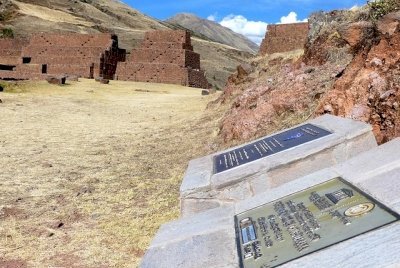
I visited this WHS in June 2019 focusing on a number of different locations in Peru. Like the Struve Geodetic Arc WHS, the Qhapac Nan WHS requires a lot of preparation mainly by reading parts of the 500MB+ nomination file, using the Find function on the PDF version and writing down a number of GPS coordinates.
The Qhapac Nan or Andean Road System was an administrative, transportation and communications system also used to demarcate the 4 basic divisions of the Inca Empire. The system expanded on almost all the territory of the Andes, nowadays Peru, Bolivia, Ecuador, Argentina, Chile and Colombia.
A main path started in Cusco towards each of the four suyos or regions. The roads were inscribed in the geography of the State. The Qhapac Nan connected Cusco with the main administrative centres of the Inca empire like for example Pachacamac (more info on the archaeological site itself in another review of the tentative site). Pachacamac is the main part of the inscribed Xauxa/Jauja - Pachacamac coastal desert section (p. 930 of the nomination file) in the Lurin Valley. It was the second largest urban centre after Cusco. This section is made up of two different types of road systems. The coastal road to Pachacamac was originally one of the best and most used roads since the times of the Wari Empire. It was also used by the first Spaniards who arrived in Peru in 1533. On the other hand, the route along the sierra linked …
Keep reading 0 comments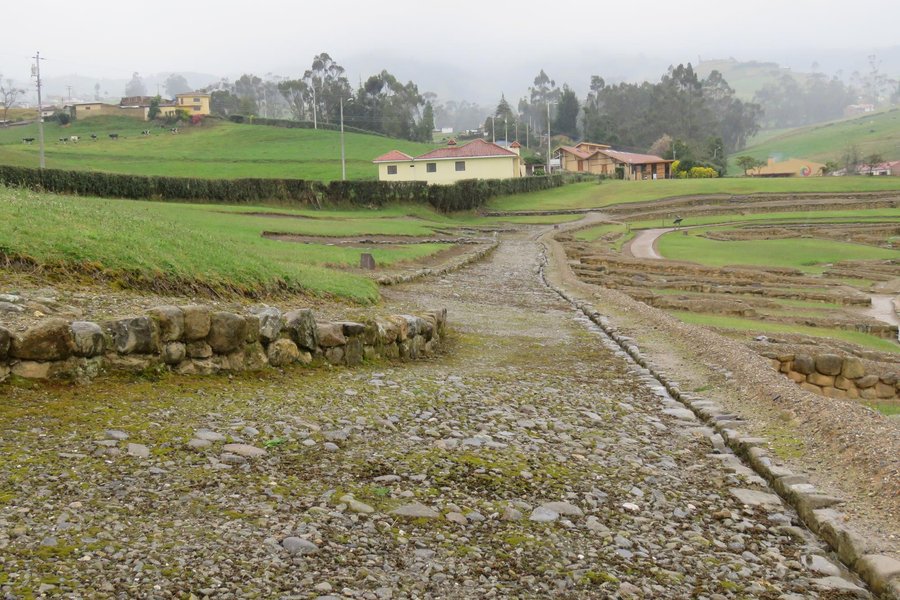
While the sites are nowhere as impressive as their counterparts in Peru and Bolivia, I did want to give a quick review to some of the Chilean elements to this complicated site.
To revisit the question at the core of Nan’s review (Is it the roads the Incas built to connect all parts of their empire? Or does it refer to the sites the roads connect?), I feel like within Chile at least, the answer is very much the latter. Chile has inscribed long portions of the road, but very almost no Incan associated sites. The roads themselves are often barely little more smudged trails through the desert, but it's still impressive how much has survived. In some places, local indigenous communities maintain the trail in a good condition.
During our Dec 2018 trip, we visited three components - a long stretch that runs for about 25km to the south of San Pedro de Atacama, a small component just north of San Pedro, and another longer stretch running north from the village of Lasana. Of the three, the most ‘impressive’ was the first, with the trail clearly visible through the desert. The setting, with the Andes to one side and Salar de Atacama to the other makes for a quite an experience. It also has the added bonus of being the point where the trail crosses the Tropic of Capricorn.
The other sites offered little in and of themselves, though Lasana is home to a rather impressive …
Keep reading 0 comments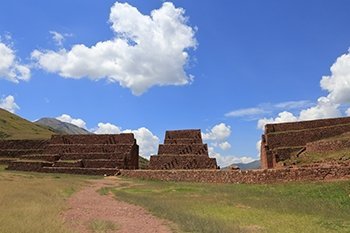
Site visited April 2018. I visited five inscribed sites of the Peruvian section of the Andean road network.
This WHS all about roads and archaeological sites associated with them. The Qhapaq Ñan road system is one of the most complex road infrastructures in the world. What makes it unique is its extreme geographical setting.
For some reason, this kind of sites are very intriguing for me. Whether it is Silk Roads, Grand Canal, Stećci or Struve, there is something like ’collect all the pieces together’ feeling. At first these inscriptions seem hard to grasp. But when you take a closer look at the single sites there are too many interesting places and you want to include as many sites as possible to your itinerary. But in the end there is time only for very limited amount of sites.
Reading the nomination document it takes some time to really understand which sites are actually inscribed and which are not even though they are mentioned in the document. To a non-devoted traveller there are some choices that could seem a bit confusing and inconsistent. For example impressive fortresses in Ollantaytambo are not inscribed even though Ollantaytambo is mentioned as a starting point to one of the road segments. Sacsayhuamán citadel on the outskirts of Cusco is not even mentioned. Llaqtapata archaeological site which is well known among hikers is not inscribed but other site with the same name that is only a minor site. The wall of Portada Rumiqolqa …
Keep reading 0 comments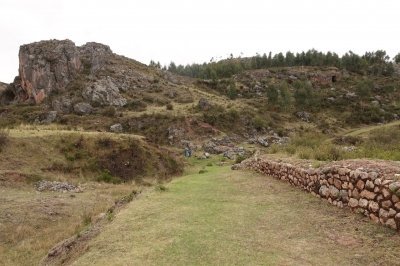
A site like Qhapaq Nan is fairly difficult to grasp. Is it the roads the Inkas built to connect all parts of their empire? Or does it refer to the sites the roads connect? Or a combination of the two? It doesn't really help that the nomination file comes in at 500 MB, the site names are somewhat cryptic IDs and that the GPS coordinates repeatedly do not match the nomination file boundaries. For a detailed discussion using Pachacamac as example, check Solivagants comments in the forum.
To tackle the site I visited multiple points along my trip in Peru and Bolivia. You will find comments for each below. Personally, I would prefer the site to be limited to the actual trails instead of serving as a one size fits all nomination for Inka sites.
Pachacamac
Pachacamac is located South of Lima and a tentative site on it's own. It's here that the Qhapaq Nan reached the coast. Unfortunately, I was not able to find any remnants of the trail and the nomination file and the GPS coordinate took me into some random suburb wihere I was unable to spot any archeological traces. To get there grab a bus on the Panamericana heading South to Lurin.
Cusco
It's in Cusco that I actually found a trail labeled Qhapaq Nan including a sign. It's very well visible (see my picture) and starts near the Templo de la Luna/Chukimarka. The GPS coordinates we show are nearly correct. The trail runs North …
Keep reading 0 comments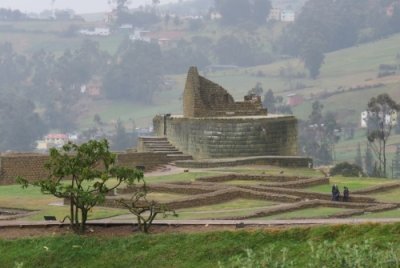
With this huge Qhapaq Nan serial nomination, the Andean countries seem to have clustered all Inca sites of any importance. I visited the area in 2011 and 2017, and besides Cuzco/Tiwanaku/Quebrada de Humahuaca which are already WHS in their own right, I visited some of the "lesser" sites too.
Pachacamac is an easy half-day trip out of Lima. I took one of the dozens of minibusses that leave all the time from Avenida Grau. It dropped me off right at the site's entrance. There's a little museum on-site, displaying some pretty Wari ceramics and also textile that has survived the ages due to the extremely dry climate here.
Its location indeed is one of the most remarkable things about Pachacamac - it's out there in the desert, within sight of the sea. The site is totally covered in sand. Archeologists are only slowly making their way to the many temples and other features below. Most of it is off-limits to visitors, though the Temple of the Sun can be climbed and other parts like the North-South Street have explanatory boards. You can do a full circuit walk of the large terrain in about an hour (if you have a car, you can also drive).
Pachacamac was a ceremonial and pilgrimage site between 200 and 1535. It was used by different civilizations: the Lima, the Wari, the Ichma, and the Inca. Its most distinguishing fact is that it predominantly is a Wari site, a culture that is not …
Keep reading 0 comments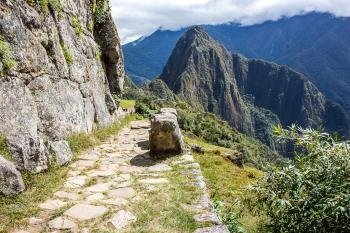
This is a strange site to visit - how do you determine whether you have 'seen' it, when it's made up of thousands of kilometres of track all across the continent?
I consider that I have ticked it off because I walked much of the tracks on my way to Machu Picchu in Peru. But you could so it so many other ways - or even spend years walking different routes and still never technically see it all.
I'm glad it has been added to the list, though. It's a really interesting part of national infrastructure and played a huge part in the ability of the Incans to grow their civilisation and conquer so much of South America.
Will UNESCO be tempted to look favourably upon a submission from the US to list the country's interstate highway system now? :)
Keep reading 0 comments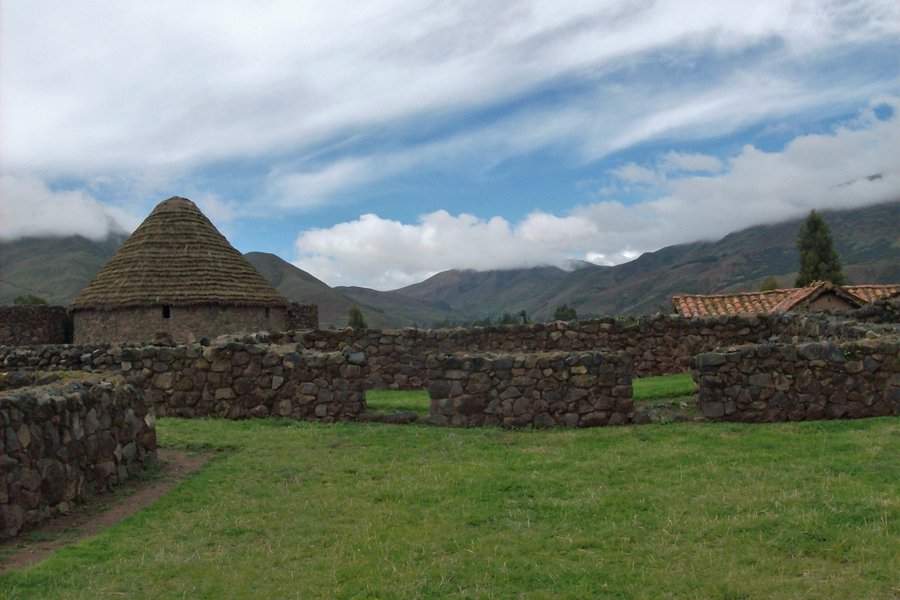
Having visited Cuzco and Pachacamac, I have covered some inscribed areas of Qhapaq Ñan. However, the site that informed me the most about the historic route was Raqchi, a primary point on the Andean Road System.
Raqchi-Qquea Segment (QÑ-CD-064, QÑ-CD-065)
Raqchi Archaeological Park is an important stopping point along Qhapaq Nan, this can be concluded based on its strategic location, temple, storehouses, and lodging. The partially ruined site and surrounding landscape is striking. An artificial wetland surround part of the site and the various structures are at least peculiar in their uniqueness. During my visit, Raqchi was merely a stopping point on the road from Cuzco to Puno. I could not have been more pleased, this pit-stop was well worth the time. The number of storehouses was surprising. The Wiraqocha Temple is one of the largest Inca structures still standing.
Associated with the road: "Among the archaeological evidence the Wiraqocha Temple stands out; houses, deposits of 155 circular qolqas, water fountains, channels, and an artificial lagoon, a tambo, Inca terraces and a 4,000-metres long linear fortress system that encircles the monumental area where the main temple is." - Nomination File
The Archaeological site of Chaskiwaisi-Tambo is only a short walk away, though its not marked on Google Maps, its visible using Satellite (West from the Iglesia de Raqchi).
Keep reading 0 comments
In Argentina this nomination includes multiple locations throughout the Eastern border from Jujuy to Mendosa. I guess it should include the Quebrada de Humahuaca as well. In Salta Province there is a special Inca site atop the Llullaillaco mountain at the height of 6700 meters! Three mummies and an accompanying treasure were unearthed. They are now presented in the Museum of High Mountain Archaeology in Salta (MAAM) where I would recommend a visit.
Keep reading 0 comments
